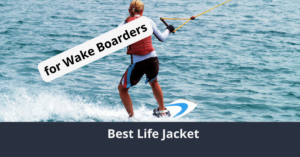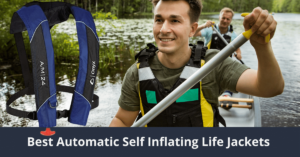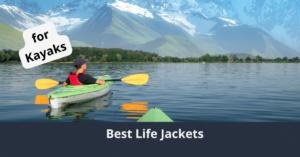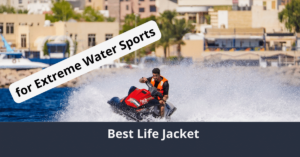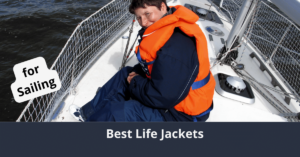Kayaking is an excellent outdoor activity, but you always need to wear a life jacket to help prevent any serious accidents. Unfortunately, not every life jacket is suitable for kayaking.
The best women’s kayaking life jackets are durable, comfortable, and allow for a wide range of unencumbered movement. We’ve rounded up some of the best vests available to help you find the right one for your specific needs.
Our women’s kayaking life jacket reviews start right now. You’ll learn what features a kayaking vest needs, how to appropriately size one, how to wear it safely, and everything else you need to know.
You’re sure to find a kayaking vest you’ll love – let’s get started!
(You might be interested in reading our article on Women Life Jackets)
[Product table]
Everything you will learn here
The Best Women’s Kayaking Life Vest Reviews (Top Picks)
Whether kayaking is a big part of your life, or you just enjoy an occasional weekend getaway, we’ve gathered up our favorite vests for 2023. Check out our top picks, presented in no particular order:
1. O’Neill Women’s SuperLite USCG Life Vest
- Size:Small- 30-33 inches(chest)
- USCG Approved Personal Flotation Device; Perfect For Wake Sports, Waterskiing, Tubing, And Swimming
- Minimal Bulk Design Allows Full Mobility.Quick-Release Delrin Buckles
The Superlite Life Vest from O’Neill is for water sports such as kayaking, water skiing, tubing, and more. It fits comfortably and securely without interfering with arm movement.
It’s a lightweight vest with minimal bulk and polyethylene foam. However, it does run on the small side. If you’d typically order a small size, you’ll want a medium, or even a large, with this vest.
It’s USCG approved for water sports, so it should meet most local regulations. You can wear it when kayaking in rivers, lakes, and even calm oceans. With a minimal design, the breathable jacket is an excellent choice for kayaking in hot weather.
Pros:
- Sizes S, L, XL.
- Lightweight, open design
- Made for water sports including kayaking
- Allows for a full range of arm movement
Cons:
- Sizes run small
- Top buckle straps have lots of slack
- The chest area can feel tight
- Not a great fit if you have large breasts
2. Airhead Trend Life Vest
- Super-soft, low-profile buoyancy foam for body hugging comfort
- Contoured inner chest panels, graded sizing, padded adjustable shoulder straps
- Full-length front zipper, efficient forward pull adjusters at the sides
Airhead’s Trend Life Vest expertly combines fashion with function. The vest’s signature color is hot pink, although it’s also available in blue, blue/green, and pink/blue.
Don’t let its eye-catching style fool you; this is a seriously safe vest suitable for kayaking, boating, skiing, and fishing. The vest’s USCG rating is Type III, so you can wear it in relatively fast-moving water.
The lightweight Poly-E foam is protected by a polyester shell, covered by 200-Denier Polyester. It dries quickly and is both UV and stain-resistant.
With sizing that goes up to 3XL, it’s a vest we recommend for women with large breasts and plus-size women.
Adjustment is easy with four belts. Three are located around the upper stomach with the fourth belt around the chest. The belts give you a substantial degree of adjustability, making this vest a good fit for a wide range of body types.
Pros:
- Fits sizes for X-SML to 3XL
- USCG rating Level III
- Four adjustable straps
- Stylish hot pink color
Cons:
- Thin fabric
- Stitching is loose
- Torso can run short
3. Stohlquist Women’s Escape PFD
- Super-soft, low-profile buoyancy foam for body hugging comfort
- Contoured inner chest panels, graded sizing, padded adjustable shoulder straps
- Full-length front zipper, efficient forward pull adjusters at the sides
Every aspect of the Escape PFD is made with women in mind. It has sculpted foam in the chest to help ensure a comfortable, curved fit. Plus, the foam has a low-profile to help it conform to your shape.
It does a great job of staying in place. The forward pull adjusters help prevent ride-up when on land and water. Additionally, it’s fully adjustable at both sides and shoulders.
The waist belt deserves a special mention. The front buckle is protected against your skin. Buckles can soak up the sun’s rays and hurt your skin, so a protective fabric is a welcome feature.
The jacket has another feature you don’t find just anywhere: zippered pockets. They’re an easy way to safely store your keys, ID, snacks, and more.
A sizing chart isn’t always easy to find with this jacket, so here’s a quick rundown:
- XS/SM 28” – 34”
- MD/LG 34” – 40”
- PLUS 40″ – 46″
Pros:
- Fits size 28” to 46”
- Designed for women
- Comfortable to wear
- Includes zippered pockets
Cons:
- Foam pads add bulk
- The “pink” jacket is purple
4. NRS Women’s Zoya PFD
- W Zoya Mesh Back PFD-ORCHID-L/XL
- W Zoya Mesh Back PFD-ORCHID-L/XL
- Northwest River Supplies
The Zoya from NRS is available in sizes L, XL, and XXL. With an anatomically-sculpted front panel and high back flotation, it’s one of our top recommendations for plus size women and women with large breasts.
Its USCG rating is III, so you can comfortably take it kayaking or use it with other water sports. It has a flotation rating of 16.5 pounds. For added safety, 3M reflective strips help you remain visible.
The vest itself only weighs 1.7 pounds, so it won’t strain your shoulders, even when wet. With an outer fabric made from 400-denier ripstop nylon, when it does get wet, it dries quickly.
Pros:
- Sized L to XL
- Ideal for large breasts
- Lightweight design
- Rated USCG III
Cons:
- Tricky sizing
- The back can slide up
5. Hardcore Water Sports Life Jacket
- Size - This is the perfect extra vest for your boat. The adult universal size is adjustable to fit most adults that would wear a S, M, or L adult t-shirt. Coast Guard approved for persons over 90 lbs. with a chest size between 30"-52". Simply loosen the straps all the way before you put the vest on. Then tighten each strap so the lifejacket conforms to your body shape.
- Color - Bright purple color with black buckles and interior. with five different vivid color options - one of them is sure to match your family style!
- Style - Hardcore Water Sports is known for it's distinct style on all liquid surfaces. Open sides provide for a breath-able fit and provide superior benefits in paddle sports mobility. This vest is truly the most versatile versatile floatation device on the market today, used often as a fishing vest, kayaking PFD, wakeboarding life jacket
This PFD from Hardcore Water Sports is an excellent vest for anyone who pe adjustability. It comfortably fits chest sizes from 30” to 52”.
Open sides allow for comfortable airflow and help with quick drying. Rated III by the USCG, you can use it for kayaking, fishing, water skiing, and more. It’s recommended for use on lakes and inland waters; you probably want something with a higher USCG rating for ocean waters.
The purple style is fashionably fun – and easy to see in the water, acting as a bonus safety feature. It’s also available in a full rainbow of bold colors, so you’re sure to find a look you like.
Pros:
- Sizes range from 30” to 52”
- Rated III for kayaking
- Stylish and visible purple color
- Easy to adjust
Cons:
- Padding can bunch
- Sizing runs small
- Waist can feel snug
(If your height and weight is above average, you should rather try Big and Tall Life Jackets)
6. Stearns Adult Classic Series Vest
- US Coast Guard-approved adult life jacket
- Great for boating, tubing, swimming, and water sports
- Soft and durable nylon shell and lightweight PE flotation foam
Two sizes are available: Adult Universal is 30” to 52,” and Adult Oversized is 52” to 62”. With a snug fit, it’s ideal for petite girls with a frame on the small side.
It has four chest belts for a versatile fit. Also, the armholes are large, which allows you to paddle without a problem.
It’s made from PE foam with a 200D nylon shell that’s durable, flexible, and easy to clean. It’s safe for pools, lakes, and other still bodies of water.
Pros:
- Snug but comfortable
- Four chests belts to adjust the fit
- Uses PE foam with a nylon shell
- Sizes between 30” and 52”
Cons:
- Sizing guidelines run small
- Not suitable for saltwater
- Design is not women-specific
7. Onyx MoveVest Dynamic Life Vest
- Soft, lightweight flotation foam
- Mesh in lower back fits high back seats
- Attached whistle for safety
Don’t let the fact this is number seven on our list dissuade you; The Onyx MoveVest is one of our favorites! It’s a comfortable, durable vest with high-quality construction.
With mesh in the back of the vest, you can sit in your kayak comfortably without sweating or feeling warm.
Additionally, it has both a lash tab and a large zippered pocket. The pocket has mesh drainage, so it won’t become weighed down with water.
The overall construction quality is high. The foam is sculpted and flexible to conform comfortably to your body, while the heavy-duty nylon resists punctures and tears.
Pros:
- Fits size 28” to 56”
- Durable, high-quality construction
- Includes a lash tag and storage pocket
- Mesh sections for breathability
Cons:
- Pulling on belts can tear fabric
- Relatively small pocket
- The lower part of the vest can ride up
Women’s Kayaking Life Jacket Buyer’s Guide (Making the Best Purchase)
Choosing the best women’s personal flotation device (PFD) can feel confusing. Truthfully, choosing a PFD specifically for kayaking is more complicated than choosing a life vest for boating or swimming, as the vest needs various features specific for kayaking.
Don’t worry if this is all totally new info to you. Here’s a closer look at everything you need to know to make the best possible purchase.
Do you need similar life jackets? See our guides:
- Best PFD For Canoeing: 7 Amazing Flotation Devices
- 7 Best Extreme Water Sports Life Jackets
- 7 Best Snorkeling Life Jackets
- Best Women’s Kayaking Life Jackets
Types of PFDs
Let’s start with the most important thing to know about kayaking life jackets. This is the one thing to remember above everything else: Not all types of life jackets are suitable or safe for kayaking.
Before we dive into the type of life jackets you do want, let’s quickly go over the two types you don’t.
Boating PFD
A kayaking life vest is not the same as a boating life vest.
Boating vests are designed for relatively stationary activities, such as riding on a boat or standing on a dock. They’re bulky and have more padding than most other types of vests.
While they’ll keep you afloat following a fall into a lake or ocean, their bulk restricts your arm movements, which can pose a serious safety hazard when paddling a kayak.
(You might be interested in reading our article on Best Boating Life Vests)
Utility PFD
Also called a Survival PFD, a utility life vest has one goal – to keep you alive. It’s snug and doesn’t allow for much arm movement, but it’ll prevent you from drowning even in rough, choppy conditions. It’s designed to position you upward with a slight backward tilt, keeping your head above water, even if you’re unconscious.
Unfortunately, you’ll have the same movement restrictions as with a boating vest. Plus, the design of the Utility PBD makes sitting in a kayak awkward and uncomfortable. Utility PFDs are not suitable for kayaking.
Now let’s look at the vest types you can use for kayaking:
Water Sports Vests
Water sports vests are designed for a fairly wide range of activities, such as kayaking and paddleboarding. Compared to Boating and Utility vests, water sports vests are trimmer, fit more snugly, and allow for a full and unrestricted range of movement.
Additionally, they usually have drain holes to help the vest dry quickly. Even if you never fall into the water, your jacket will get wet. A quick-drying vest helps reduce the weight against your shoulders and is more comfortable against your skin.
(If you are a sports woman and love to play in water, you should rather try Best Water Sports Life Vests)
Kayak Life Jackets for Fishing
A kayak life jacket specifically made for fishing is another option. It’s similar to a water sports vest with a snug fit that allows for freedom of movement. Additionally, these vests have a high back that allows you to sit comfortably in the kayak.
The biggest difference between a vest for kayaking and one specifically made for kayak fishing isn’t the style. Instead, vests for fishing have an abundance of front pockets to hold fishing gear. They’re basically a combination of a PDF and a traditional fishing vest.
(Lookup our article specially on Best Kayak Fishing Life Jackets)
How to Size Your Women’s Kayaking Life Jacket
When a life jacket is sized properly, it’ll feel comfortable and allow you to move unencumbered. However, proper sizing is about more than just comfort. An improperly fitting vest can pose a serious safety hazard.
A vest that is too large won’t provide the correct buoyancy. The lack of underarm support means your torso and head can sink down into the vest, potentially submerging your face underwater. You also run the risk of slipping out of the vest entirely.
Additionally, a vest that is too tight also poses problems, especially when kayaking. You need to move your arms and torso freely, but a tight vest can restrict your ability to do so.
Chest Measurements
Life vest sizing – for every type of vest – is determined by chest measurements. You want to measure the widest part of your chest. For women, this is typically the bust. (Men typically measure the upper part of their stomach.)
Typical chest circumferences for women’s kayaking vests range between 44 and 60 inches. If you fall between sizes, choose the smaller size. You’re safer with a vest that’s slightly snug than one that’s too large.
Here’s another common question about sizing: How accurate are manufacturer’s sizes such as XL, 2XL, and so on?
They’re often helpful guidelines, but keep in mind that this type of sizing is brand specific. For example, one manufacturer’s 2XL might be another’s 3XL. Always check the numerical measurements, which should also be listed.
How Important is it to Get a Life Jacket Made Specifically for Women?
You’ll find a ton of unisex vest options. Many life vests, especially utility/survival PDFs, are designed for a generic body type. Typically, vests with a universal fit are less expensive than those made specifically for a man or woman.
A life vest made for women is almost always the better option, even if it costs a bit more than a gender-neutral one. The fit is far more comfortable due to integrated breast cups, torso sizing differences, and other features specific to a woman’s body.
Vest Style
Along with size, the shape and style of the vest also play a major role in how well it fits. There’s no universal rule here. Instead, you need to match the style of the vest with your specific body shape.
Many women prefer a contoured jacket. Look for a tapered fit, which helps prevent the vest from riding up around your midsection as you move.
If you wear any extra-large sizes, choose a jacket with longer front panels, as short front panels tend to poke into your chest and stomach.
Finally, consider the arm cutouts. How much space exists around each arm? Shorter armholes help keep your jacket snug when swimming for extended periods, but you want a jacket with large armholes when kayaking. Larger armholes allow you to rotate your arms, a necessary movement when rowing.
Straps
No life jacket will fit perfectly. However, straps can help you adjust the vest to your body’s specific shape. Generally, the more adjustment straps a vest has, the more comfortably and securely it’ll fit you.
Features
Aside from finding the correct size and shape of a vest, you also want to consider its features. Even though many water safety jackets look basically the same, seemingly small differences can make a big difference in safety and comfort.
Let’s rundown some common features, what they mean, and whether or not you’ll want them:
Buoyancy
Buoyancy is the vest’s ability to keep your head above water. It’s rated in pounds. The average adult needs a vest with a buoyancy rating between seven and 12 pounds to stay afloat safely, although the rating increases for choppy or fast-moving water.
You can easily estimate your personal buoyancy needs. The human body is about 80% water and 15% fat. Take your total weight and multiply it by 80%. Next, take your total weight and multiply it by 15%. Subtract those two numbers from your total weight to reveal the total buoyancy needed to keep you afloat.
Typically, the leaner you are – meaning the less body fat you have – the more buoyancy you’ll need in a life jacket.
US Coast Guard Rating
Closely related to buoyancy is the PFD’s US Coast Guard Rating. All flotation devices have a USCG rating. It determines the suitability of the device for various water conditions and body of water types. There are five USCG ratings:
Type I – Offshore Life Jacket
The highest rating is reserved for jackets that can handle rough, remote water. These jackets can usually keep an unconscious person afloat, even turning them face-up. They have a buoyancy rating of 22 pounds for adults.
Type II – Near-Shore Buoyant Vest
Type II life vests are less bulky than Type I vests, but otherwise reasonably similar. They’re designed for near-shore environments. While some types will support you if you’re unconscious, they’re usually not considered quite as heavy-duty as Type I. Their minimum buoyancy is 15.5 pounds.
Type III – Flotation Aid
A Type III vest is the preferred option for most water sports. Like the Type II, they have a minimum buoyancy of 15 pounds, although they’re designed for maximum mobility when moving.
Type III rated vests are often referred to as the “Paddler’s Choice.” They’re considered the ideal choice for most kayakers.
Type IV – Throwable Device
A Type IV device is a cushion, ring, or another buoy. They’re not meant for continuous wear. Instead, they’re thrown for a boat or shore to someone in the water. They have a minimum buoyancy of 16.5 pounds.
Type V – Special Use Device
A Type V device is designed for fast-moving currents, including commercial uses. They’re a safe and reliable option for whitewater kayaking, with a minimum buoyancy averaging between 15 and 22 pounds.
Life Vest Materials
The materials used to make a PFD affect its comfort and properties. The three most common materials used in life vests are:
- Neoprene
- Vinyl
- Nylon
Neoprene
Neoprene is a synthetic rubber that’s flexible, breathable, and withstands both high and low temps without an issue. It’s found in a wide variety of clothing and products, including Halloween masks, seat covers, scuba gear, workout clothes, and more.
Neoprene is usually considered the best option for kayaking. It works well because it has a snug fit while still allowing for a full range of comfortable motion.
It does hold onto water, but sunshine dries it out fairly quickly. If your vest gets wet, you won’t feel miserable all day long.
On the downside, it can get fairly hot, especially in direct sunlight. To help stay cool, look for vests with mesh sections, which allows for comfortable airflow.
Vinyl
Vinyl is a thin, flexible type of plastic. It’s durable, tear-resistant, and repels water well. Plus, it’s easy to keep clean.
It’s a fairly common coating for water sport life vests. Although it’s not as comfortable or flexible as neoprene, it lasts a long time and does a solid job resisting damage.
Nylon
Nylon is the traditional option, and it’s really your covering of last resort. It’s a synthetic fiber used to make a variety of products and clothing. Nylon is one of the earliest materials used to make life vests. You’ll typically find nylon vests on rental boats, public watercraft, and in similar commercial situations.
While it’s flexible and durable, it stays wet for a long time. Plus, it can feel heavy. Vinyl, and especially neoprene, outperform nylon in a variety of ways.
Traditional vs. Inflatable
Life jackets have three types of inflation:
- Inherently buoyant (Traditional)
- Inflatable
- Semi-inflatable
Traditional
Traditional vests will always keep you afloat. They have no “on/off” switch. Instead, they’re always buoyant. An inherently buoyant PFD is the best option for kayaking, where one wrong roll can put you in the water before you even realize what’s happening.
Inflatable
Inflatable vests require activation. Typically, CO2 cartridges fill the vest with air after you yank on a pull cord. On the plus side, when not inflated, these vests are lightweight and portable.
However, they’re not suitable for kayaking. If your kayak suddenly flips, you’ll seriously struggle to locate and pull the ripcord, especially if you’re upside-down and underwater.
Semi-Inflatable
Also known as hybrid vests, this type of vest features traditional buoyancy plus extra pockets of temporary inflation designed for one-time-use. They’re typically used when spending significant time aboard ocean vessels or other large ships. You don’t find many semi-inflatable options for kayakers.
Vents
Modern life vests don’t need to completely cover your torso. Vests with vents allow for consistently cool airflow. You can find them in all sorts of locations on the vest, with the sides and back two of the most common spots.
If you frequently kayak in warm weather, a vest with a robust ventilation system is a must. But don’t dismiss vents if you’re more of a cold-weather kayaker. Vents help reduce sweat, which can be an issue in every type of weather.
Back Design
Unlike most water sports, kayakers spend a majority of time sitting down, with their back pressed against a tall seat. The design of the back of the vest has a big influence on how comfortable it is to sit.
The jacket’s back shouldn’t have bulky foam. Instead, you want it to have either extremely thin foam or simply mesh. You don’t want the vest to force you to lean forward while sitting.
Reflective Strips
Reflective strips help increase visibility. They’re typically found on the shoulders and back, so the vest can be seen if you’re submerged in water. High-visibility tape is an excellent option when kayaking in:
- Whitewater and other strong currents
- Low-light conditions
- Unfamiliar locations
The color of the best helps increase visibility, too. Bright pinks, purples, and yellows are often easier to spot in fast-moving water.
Pockets
Many vests have pockets. They’re made to hold small items such as keys, a survival knife, snacks, and so on. While floatable coolers and bags can help keep your gear afloat if the kayak turns over, you want a vest pocket for more important items like car keys.
Look for a pocket large enough to store what you want to carry, but not much larger, as pockets do add to the bulk of the vest. Also, make sure the fastener secures the pocket tightly. Usually, a zipper is better than snaps or buttons.
Also, the pocket should have a mesh section. Mesh allows water to flow out of the pocket instead of accumulating. While some pockets create a watertight seal, they typically don’t work very well. Leave your wallet in the car; you’ll only want to put items in the pocket that can get wet.
Minimalist Jackets
Finally, you can find jackets without many of the features above. While you certainly miss out on the benefits, you don’t necessarily need a jacket with pockets, reflector strips, or a form-fitting design. A bare-bones option is usually cheaper. Just make sure the USCG rating is suitable for where you want to kayak.
Consider Where You Kayak
What type of water are you planning to kayak in? The three major types are:
- Lake
- Ocean
- River
If the water moves slowly and is relatively free from obstacles, a USCG rating of III is usually ideal. Common examples include slow-moving rivers, lakes with small waves, and inlets.
What about fast-moving bodies of water, including whitewater? For especially rough water, you’ll want a Class V vest. However, in lower-level whitewater, a Class III might provide enough safety, but you’ll want reflective tape or coloring. Check with local experts if you’re not sure about what vest to use.
Additionally, you want maximum buoyancy for any vest you wear in fast-moving water.
Safety Tips for PFD Use
A life vest is just one part of an overall safety system. Here’s what you need to know about staying safe:
Know the Law
First, always follow all local, state, and federal laws. They’re made to keep you safe. Plus, you can avoid a potentially expensive ticket.
Keep in mind laws can change by the season. In many places, regulations during winter are stricter than in summer. At the very least, you’re almost always required to have a life vest for every passenger in the kayak at all times.
Check for Safety
The first time your vest gets wet shouldn’t be when you roll your kayak. Always take the time to thoroughly test your kayak in a safe, still body of water.
First, adjust the straps and belts to ensure a snug fit. Stand with your arms raised. Have a friend try to pull the kayak off your head. If he or she can remove it, then the PFD is too large or not secured properly.
Next, check the kayak’s buoyancy. When in the water, relax your body and tilt your head back. Let the vest suspend you entirely. If the vest has the correct buoyancy for your weight, your chin will remain above water as your float. Also, you’ll be able to breathe easily, without water sloshing into your mouth or nose.
Take It Seriously
This last tip is the most important and often the most overlooked. No matter your level of kayaking expertise, and no matter how calm the water is, always take the risk of drowning seriously.
An accident can happen in the blink of an eye. Drowning is far more common than many people realize. For more information, visit our resource library dedicated to US Drowning Statistics plus Worldwide Drowning Statistics and Drowning Prevention.
Wear a life vest every time, even if you’re near a body of water. A well-made, properly-fitting life jacket helps minimize the risks.
Best Women’s Kayaking Life Jackets Comparison Chart
| Product Name | Price | Available Sizes | Safety | Unique Features |
|---|---|---|---|---|
| O•Neill Women•s SuperLite USCG Life Vest | $ | S, L, XL | USCG approved | Lightweight vest with minimal bulk and polyethylene foam |
| Airhead Trend Life Vest | $ | X-SML to 3XL | Protected by a polyester shell, covered by 200-Denier Polyester | Four adjustable straps and have hot pink color |
| Stohlquist Women•s Escape PFD | $ | XS/SM; MD/LG; PLUS | Protective fabric buckles prevent from sun rays | Stylish and visible purple color |
| NRS Women•s Zoya PFD | $ | L, XL, XXL | Rated USCG III | Ideal for large breasts |
| Hardcore Water Sports Life Jacket | $ | XS/SM; MD/LG; PLUS | Rated III for kayaking | Stylish and visible purple color |
| Stearns Adult Classic Series Vest | $ | Adult Universal/Adult Oversized | Safe for still bodies of water | Has 5 chest belts for versatile fit |
| Onyx MoveVest Dynamic Life Vest | $ | SM, M, L, XL, XXL | High construction quality makes it more secure | Has a lash tag and storage pocket |
Wrap Up
You don’t have to settle for an ill-fitting, uncomfortable life vest. Instead, the best kayaking life jackets are durable, comfortable, and allow you to kayak with no movement restrictions.
The guide above has everything you need to know about selecting the appropriate type of personal flotation devices for kayaking, proper sizing, use, and more.
Use our recommendations to find a life jacket with the perfect combination of safety, comfort, and style. You’ll stay safe on the water and have more fun in your kayak than ever before!
Last update on 2024-07-27 / Affiliate links / Images from Amazon Product Advertising API








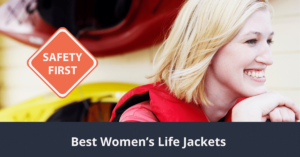

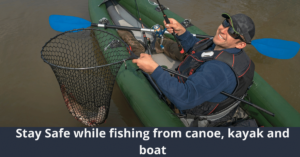
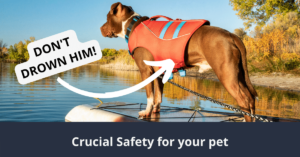

![7 Best Jet Ski Life Jackets with awesome fit [2023 guide] 15 Best Jet Ski Life Jacket](https://insmoothwaters.com/wp-content/uploads/2022/09/Best-Jet-Ski-Life-Jacket-300x157.png)

